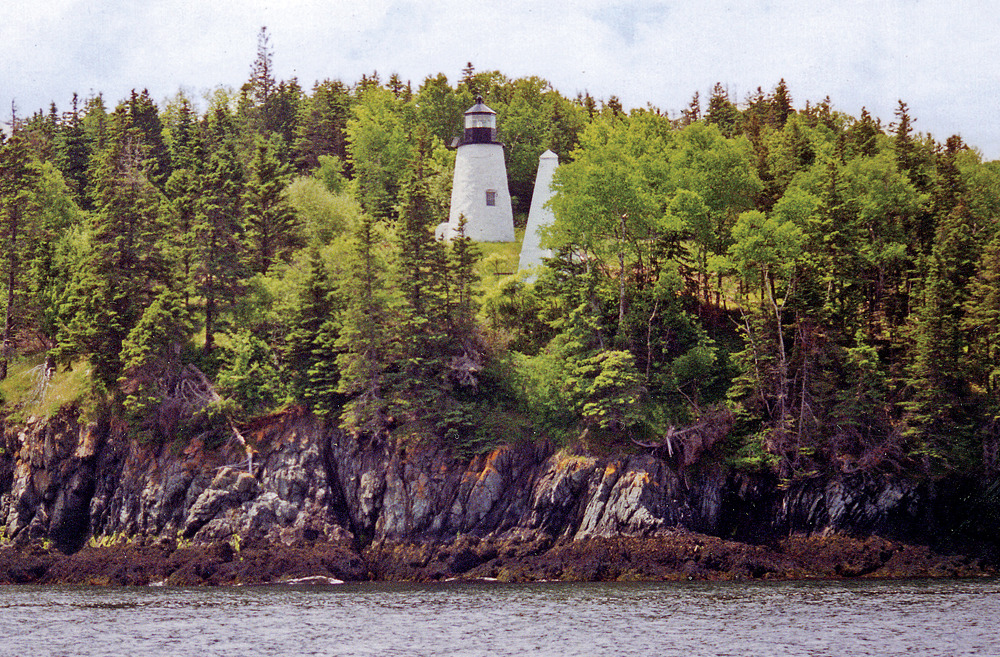
Accessibility: ![]()
Geographic coordinates: 44° 13' 04" N 68° 46' 04" W
Nearest town: Deer Isle. Located in east Penobscot Bay.
Established: 1838. Present lighthouse built: 1838. Deactivated: 1959.
Height of tower: 30 feet. Height of focal plane: 106 feet.
Earlier optic: Fourth-order Fresnel lens. Present optic: 300 mm.
Characteristic: White flash every 4 seconds.
Eagle Island Light was established on the east end of the 260-acre island to help guide vessels toward the Penobscot River. The first keeper was John Spear, who died at the station in 1848 and was replaced for a time by his widow. A two-story keeper’s house was built at the same time as the stone lighthouse; a fog bell tower was added later.
Eagle Island could be a harsh place for lighthouse families in the winter. In the winter of 1917–18 there was solid ice from Eagle Island to Bangor. It wasn’t until 1919 that the government furnished a boat for the keeper.
After automation, the Coast Guard put all the buildings, except the tower itself, up for bid with the condition that the buyer would remove the buildings. Nobody was willing to try this. In February 1964, a Coast Guard crew demolished the buildings, leaving the old lighthouse tower standing alone except for the bell tower.
Under the Maine Lights Program, the lighthouse was transferred in 1998 to a nonprofit group, the Eagle Light Caretakers (c/o Sam Howe, 2742 Normandy Drive NW, Atlanta, GA 30305).
The lighthouse is difficult to see from the mainland. It can be viewed from the “Lighthouses Boat Trip” offered by Old Quarry Ocean Adventures (207-367-8977, www.oldquarry.com) of Stonington. It can also be seen from Eagle Island mailboat cruise aboard the Sunset Bay Company’s Katherine (207-348-9316, www.eagleislandrentals.com/transportation.html), with morning cruises departing from Sylvester’s Cove in Deer Isle every day except Sunday, mid-June to mid-September. Reservations are required.
Fascinating Fact 
This light station had no well for water until 1947 and no indoor plumbing until 1949. These basic conveniences were obtained partly through the help of Senator Margaret Chase Smith.